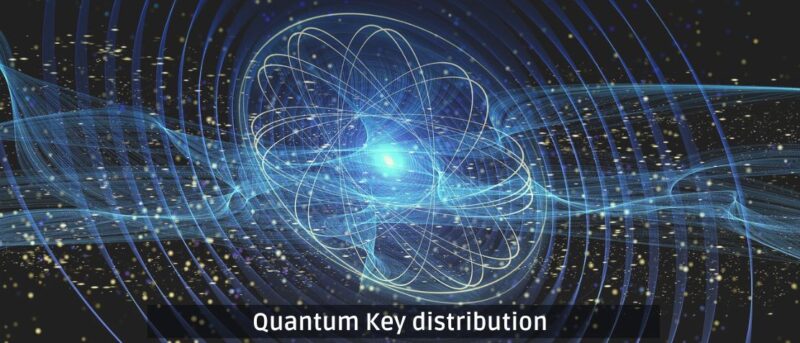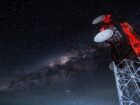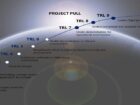Distribution of ‘information-theoretically’ secure (ITS) keys is the essential part of an encryption line communication since intercepting a key would mean having the ability to decrypt a message. Today, the only way to guarantee the anonymity of a key is to use the laws of quantum physics through Quantum Key Distribution systems.
Cryptographic algorithm systems based on keys to encrypt or decrypt messages can be classified into two groups:
- Symmetric cryptography: these algorithms use duplicate cryptographic keys for encrypting or decrypting messages. The keys are private and shared only between a secure line of communication. Sharing keys securely is the main challenge of this system.
- Asymmetric cryptography: Public Key cryptography is based on generating two keys, one public distributed without security and the other private. The public key allows for encrypting messages so anyone can encrypt a message, but only the secret key can decrypt the information. Asymmetric cryptography is relatively slower than symmetric cryptography, therefore, is not considered suitable for bulk encryption.
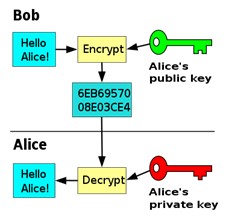
Cryptographic systems today use both algorithms, usually asymmetric encryption, to securely exchange cryptographic keys for the symmetric system.
The classical system for sending cryptographic keys has security that relies on mathematical assumptions; therefore, in theory, a so-called algorithm could obtain the keys. Although this algorithm does not exist in the public sphere, no evidence cannot be developed in the future. The computational power of the classical computer is increasing, and Quantum computers are also being developed, showing that they can perform unimaginable tasks at this time. Quantum Key Distribution solves this dilemma since it does not depend on mathematical assumptions and bases its security on the laws of quantum physics.
Quantum properties. Secure key distribution
One important and unique property of quantum key distribution is the ability to detect if a third person has tried to obtain the key (eavesdropper’s detectability). This is possible thanks to the properties of quantum mechanics.
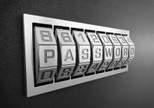
Quantum properties. Secure key distribution
One important and unique property of quantum key distribution is the ability to detect if a third person has tried to obtain the key (eavesdropper’s detectability). This is possible thanks to the properties of quantum mechanics.
QKD needs space-based relay communication for long distances
Fiber-based quantum key distribution (QKD) systems for link distances up to a hundred kilometers are already available for several years. Still, for higher distances, optical fiber link losses and current photon detector technology limit the maximum span length without using regeneration (amplification). However, this limitation does not exist in a space environment. So, for long distances is necessary space-based relay communication. This is why researchers and space agencies invest in this communication technology.
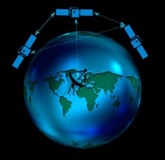
Network architectures for space-optical quantum communication
One-time pad (OTP) is the only cryptographic technique that is considered that cannot be cracked. This method uses a key with the same length as the message and is used only once. Combining the hardiness of this method with the secrecy guaranteed by Quantum Key Distribution results in the perfect line communication system.
Quantum Key Distribution only supports low-key rates, so only small data rates are possible using one-time pad encryption. Quantum Key Distribution can be combined with a classical algorithm, such as an Advanced Encryption Standard (AES) to solve this limitation.
European Space Research and Technology Centre (ESTEC) and European Space Agency (ESA) proposed Network architectures for space-optical quantum cryptography services at the International Conference on Space Optical Systems and application (ICSOS) 2012, were published a paper with the detail of space architectures, ground, and control segment for operational space-based Quantum Key Distribution. This work has been funded by the ARTES 1 program of the European Space Agency (ESA).
ARTES (Advanced Research in Telecommunications Systems) program aims to support and develop new-generation satellite telecommunication products and technology. Alter Technology actively participates in these programs, specifically in the Quantum Key Distribution technology; we collaborate in the ARTES 5 program by publishing a paper where a mandatory subsystem for quantum communication in space is presented, a photonic transceiver capable of generating and detecting entangled photons as well as faint laser pulses, which we call Quantum Transceiver (QTxRx).
For more information:
- Quantum Key Distribution, Secure Line Communications - 10th November 2022
- Space-Based Quantum Communication - 10th November 2022
- Optical Transceiver In New Generation Satellite Communication - 9th November 2022

